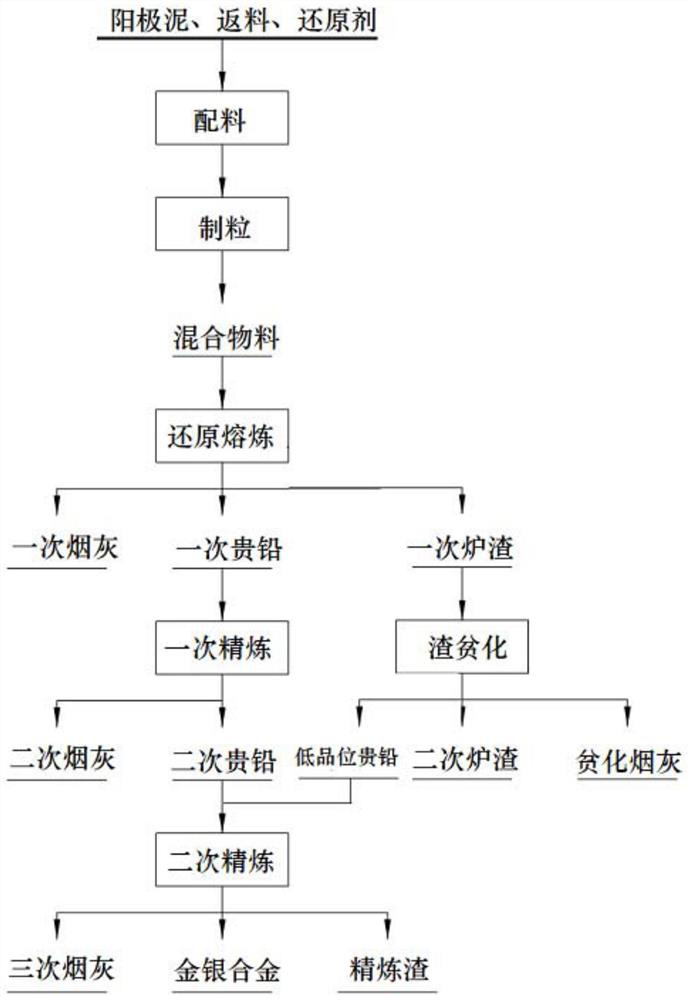Anode mud treatment method
A treatment method and anode slime technology, which is applied in the field of non-ferrous metallurgy technology, can solve the problems of restricting anode slime pyroprocessing technology, low comprehensive utilization rate of valuable metals, and low equipment treatment efficiency, so as to reduce fugitive emissions and facilitate Effects of recovering base metals and saving flux
- Summary
- Abstract
- Description
- Claims
- Application Information
AI Technical Summary
Problems solved by technology
Method used
Image
Examples
Embodiment 1
[0062] The lead anode slime (containing 20% of Pb, 18% of Sb, 5% of Bi, 10% of Ag, 10% of As, the percentage (%) here refers to the mass percentage) and crushed coal were mixed according to the mass ratio of 100:5 to obtain the first A mixture of materials, at the same time mixed into the return material, the return material is discharged from the three-time soot from the silver furnace. Then, the first mixed material is conveyed to a cylinder granulator through a belt for granulation, and the cylinder granulator makes the first mixed material into granules, and the moisture content of the material is controlled not to exceed 35%.
[0063] Before the granulated first mixed material is sent to the oxygen-enriched side-blowing furnace, it is continuously fed into the oxygen-enriched side-blowing furnace through the feeding port. The oxygen-enriched side-blowing furnace uses natural gas as fuel and oxygen-enriched air as combustion-supporting gas, wherein the oxygen concentrati...
Embodiment 2
[0070] It is basically the same as Example 1, except that the anode slime used is copper anode slime after decopper removal, and the components of the anode slime are Pb 15%, Sb 3%, Bi 2%, Ag 10%, and Cu 1%.
Embodiment 3
[0072] The difference with Embodiment 1 is that the oxygen-enriched side-blowing furnace uses pulverized coal as fuel.
PUM
 Login to View More
Login to View More Abstract
Description
Claims
Application Information
 Login to View More
Login to View More - R&D Engineer
- R&D Manager
- IP Professional
- Industry Leading Data Capabilities
- Powerful AI technology
- Patent DNA Extraction
Browse by: Latest US Patents, China's latest patents, Technical Efficacy Thesaurus, Application Domain, Technology Topic, Popular Technical Reports.
© 2024 PatSnap. All rights reserved.Legal|Privacy policy|Modern Slavery Act Transparency Statement|Sitemap|About US| Contact US: help@patsnap.com








